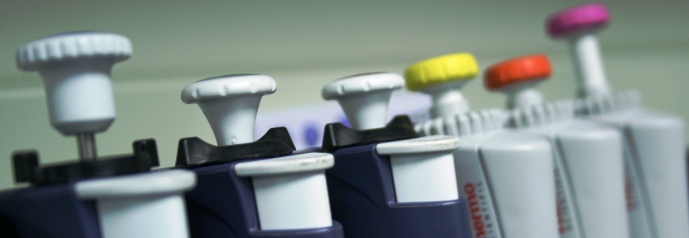Sample Preparation

In order to accommodate the growing demand upon our facility and to minimize turn around time we will only accept sequencing reactions that are provided in the following format
- All samples must be submitted with the template and primer combined in either a 1.5ml microfuge tube or a 96 well plate.
- The microfuge tube should be clearly labeled with indelible black ink with the reaction name (generally the template name followed by the primer name) and the requestor's initials.
- The reaction name on the microfuge tube should correspond exactly to what is written on the request form.
- For Reactions requiring standard primers provided by the Sequencing Facility please provide only the amount of template as indicated for each template type.
- For templates being sequenced with multiple standard primers please provide only the amount of template necessary for each reaction in a separate microfuge tube. Please label the tube with the template name, primer name and your initials.
- For researchers having larger volume sequencing needs the reaction mixes can also be provided in 96 well format. Please leave wells A1 and A12 blank for our control reaction, make sure the orientation of your plate is clearly marked and please use the 96 well plate request form.
Recommended Template Quantity
The table below shows the recommended quantity of template to use in a cycle sequencing reaction.
Template Type Template Concentration (ng/ul) Template Volume Custom Primer Concentration Custom Primer Volume PCR product:
| Template Type PCR Product |
Concentration |
Volume (ul) |
Custom Primer Concentration (uM) |
Custom Primer Volume (ul) |
| 100-200 bp | 1-3 | 10 ul | 2.0 uM | 5.0 ul |
| 200-500 bp | 3-10 | 10 ul | 2.0 uM | 5.0 ul |
| 500-1000 bp | 5-20 | 10 ul | 2.0 uM | 5.0 ul |
| 1000-2000 bp | 10-30 | 10 ul | 2.0 uM | 5.0 ul |
| > 2000 bp | 40-100 | 10 ul | 2.0 uM | 5.0 ul |
| Single-stranded DNA | 20-50 | 10 ul | 2.0 uM | 5.0 ul |
| Double-stranded DNA | 50-150 | 10 ul | 2.0 uM | 5.0 ul |
| Large DNA (e.g., BACs, PACs, YACs, phage, cosmids, and fosmids) | ||||
| 0.4-1.0 ug | 12 ul | 5.0 uM | 5.0 ul | |
| Bacterial genomic DNA | 2-3 ug | 10 ul | 5.0 uM | 5.0 ul |
Template Recommendations
The single most important determinant of a successful sequencing reaction is a high quality template. DNA that is suitable for restriction analysis or manual sequencing may not be of high enough quality for cycle sequencing. Some points to consider:
- The two most common contaminants that will adversely affect your sequencing results are EDTA and salt.
- Phenol from alkaline lysis mini preps is not tolerated at all in the sequencing reaction.
- Similarly, incomplete removal of cellular components such as RNA, proteins, polysaccharides, and chromosomal DNA will adversely affect your sequencing results.
- As noted below, residual ethanol in the template can also lead to a failed sequencing reaction. A thoroughly dried column prior to the elution of DNA is imperative.
| Contaminant | Final Amount Tolerated |
| RNA | 1.0 ug |
| PEG | 0.3% |
| NaOAC | 0.5 mM |
| Ethanol | 1.25% |
| Phenol | 0% |
| CsCI | 5.0 mM |
| EDTA | 0.1 mM |
DNA quantity as well as quality can affect your sequencing results. Templates that are too weak will not generate sufficient signal for the reaction to be interpreted. Alternatively, templates that are too strong can result in top-heavy data - lots of signal at the beginning of the sequence, followed by a decrease in signal further out due to depletion of the fluorescently labeled ddNTPs. Fluorometric or spectrophotometric determination of template concentration is recommended.
For high quality and reproducible results we recommend Qiagen, Gibco Concert, or Millipore purification methods.
All templates should be resuspended in either MilliQ H2O or 10 mM Tris-HCL pH 8.0. For long term storage, 10 mM Tris is recommended.
PCR products must be gel purified to ensure that all non-specific bands and free oligonucleotides are removed from the template.








